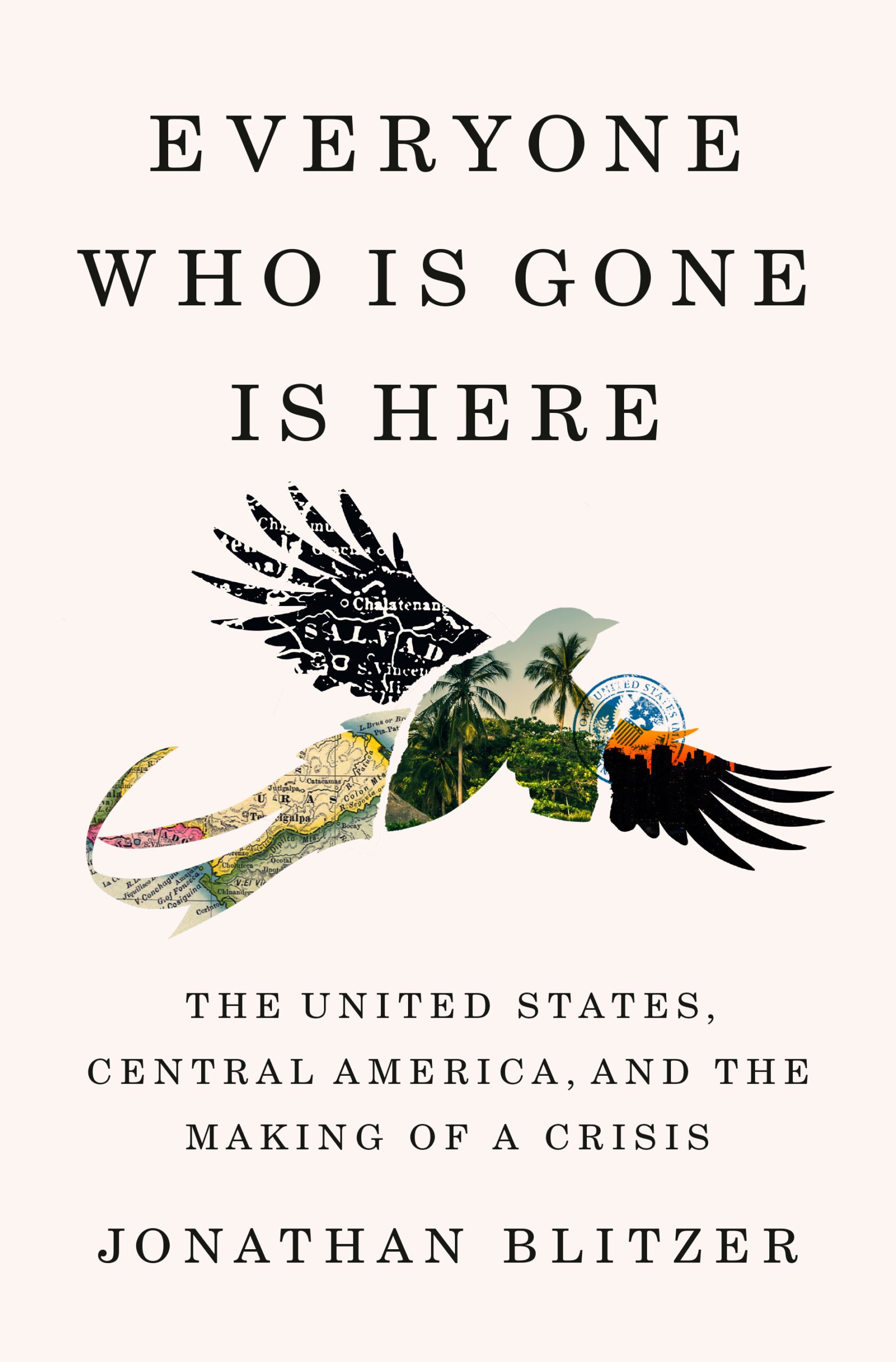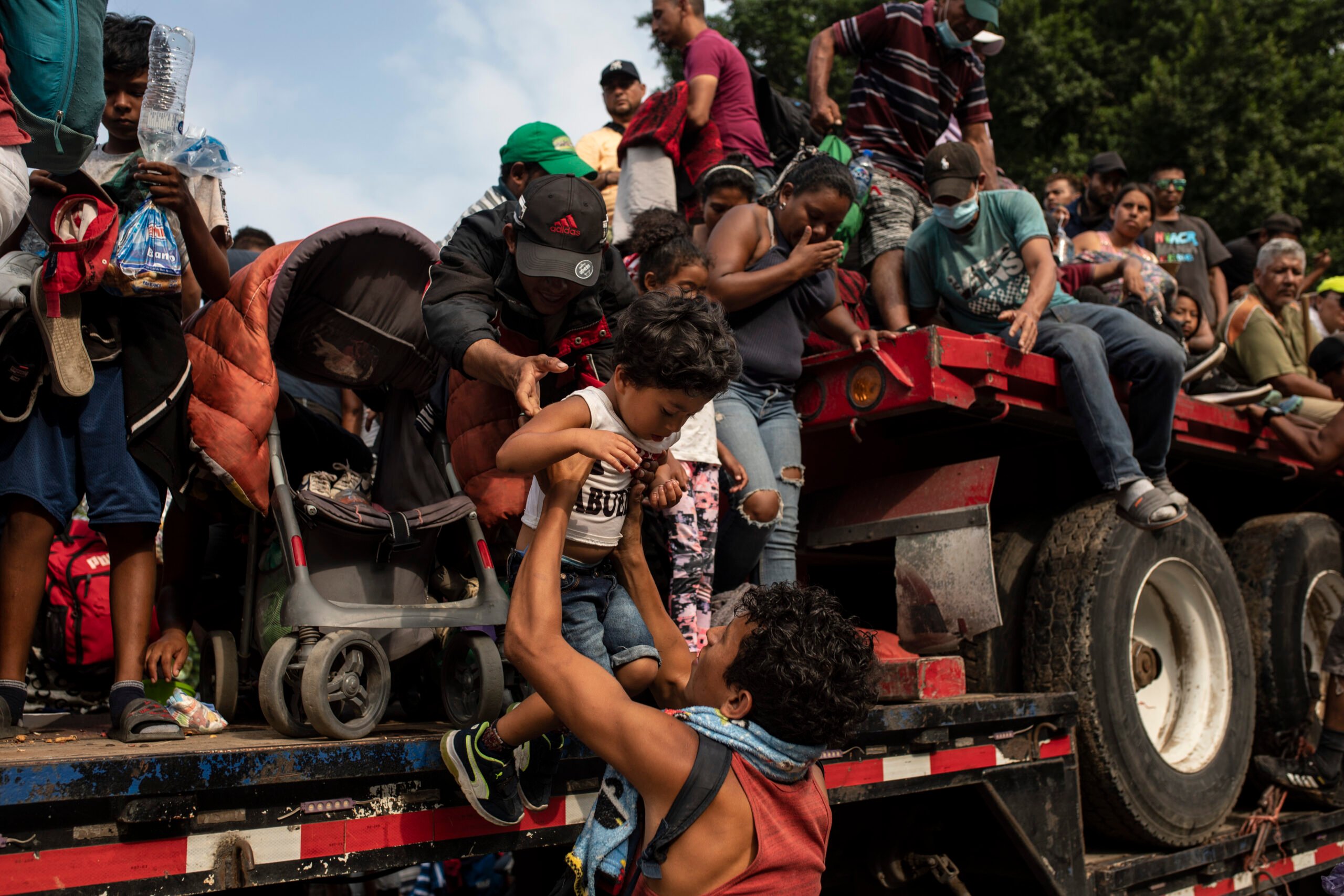The heart of Jonathan Blitzer’s new book about Central America is a heart doctor. Born in the 1950s in El Salvador, Juan Romagoza was drawn to medicine by something like a religious calling. By the time he finished his education, his tiny but storied nation was drowning in state violence. In 1980, he witnessed a patient, a student activist, coolly executed in a hospital bed by national security forces. He made a mission of treating activists and campesinos brutalized by blood-crazed soldiers—a choice that set him on a path to being brutally tortured, followed by forced emigration and a life of activism in the United States. Romagoza’s biography is the story of an era, a region, and a great debt that remains unpaid. He is history in the flesh.

“Politics is a form of selective amnesia,” writes Blitzer, a journalist who covers immigration for the New Yorker, in his introduction to Everyone Who Is Gone Is Here: The United States, Central America, and the Making of a Crisis. “The people who survive it are our only insurance against forgetting.”
Those lines, a touch opaque at first, are something of a raison d’être for Blitzer’s 500-page journalistic history, set for release in January. The current immigration debate in America ping-pongs uselessly between an increasingly ethno-nationalist right wing and a lesser-evil Democratic Party, politically fainthearted and sometimes hamstrung by the courts. Migrants never stop coming but are subjected to needless cruelty, while our politics grow poisoned. “For more than a century, the US has devised one policy after another to keep people out of the country,” Blitzer writes. “For more than a century, it has failed.”
At best, American politicians today voice humanitarian concerns and pay homage to our “nation of immigrants” mythos. But outside of certain leftist and immigrant rights activist circles, one hears little talk of the U.S. role in causing emigration from Latin America. For the last decade, asylum-seekers from Central America’s “Northern Triangle”—Guatemala, El Salvador, and Honduras—have defined the migratory flow to our southern border. We often speak of them as needy or as dangerous, as frightened mothers or as gang members, but rarely as the product of decades of U.S. policy in the region. This is the debt that history imposes, one that more welcoming immigration policies might help repay.
Blitzer’s answer to our country’s willful ignorance is a character-driven chronicle of 40 years of transcontinental violence and displacement.
In the 1950s, when the Cuban Revolution inflamed Washington’s fears of a communist Latin America, the United States began earnestly backing El Salvador’s military dictatorship, which had ruled for two decades since a massacre of Indigenous peasants known simply as La Matanza. From the ’50s through the Reagan years, the United States supported the systematic and lawless repression of labor, campesino, and left-wing Catholic movements, essentially financing the machine-gunning of Salvadoran civil society in the name of preventing communism. Among the victims was the physician Juan Romagoza, who was detained in 1980 on false charges for weeks, shocked with electrodes, sodomized with a metal rod, and shot through the arm to prevent him from resuming work as a surgeon.
Because he had uncles in the military, Romagoza narrowly escaped with his life, soon fleeing to Mexico City. He found housing with other Salvadoran refugees in a sort of trauma-infested boarding house where “it was a common occurrence for the residents to jolt each other awake from sleep with their moans and howls.” Astonishingly, Romagoza—physically mangled and separated from his girlfriend and young child—soon dedicated himself to helping Indigenous Guatemalan migrants, fleeing a U.S.-enabled genocide in their own Central American nation, en route to the States. In turn, Blitzer writes, the Guatemalan refugees grew “protective” of Romagoza, sending their children to cheer him up and teaching him folk songs.
Moments like these may seem extraordinary, as may Romagoza himself. But the indomitable humanity and unusual strength of many migrants is an inconvenient fact for xenophobic politicians. It takes guts and resourcefulness to leave one’s homeland, and it takes solidarity to survive. Often, the demagogue’s trick is to make Americans despise the best among us.
Eventually, Romagoza crossed illegally into the United States, where he built a life around helping provide medical care to fellow refugees and advocating against U.S. support of state terror. He encountered the “sanctuary” movement, a network of religious activists smuggling Central American asylum-seekers into and throughout the country. In the 2000s, Romagoza even testified in a civil case brought against high-level Salvadoran military officials then living in Florida. As he literally bared his scars before the jury, he had a transcendent experience: He felt himself merging with those he’d known among the tens of thousands killed by his government in the ’80s. “Everyone who is gone is here,” he thought, giving Blitzer’s book its enigmatic title.
In 1980, Congress codified the international concept of asylum into U.S. law for the first time. Despite Central Americans facing overwhelming threats of torture and death, they were almost universally denied that protective status on technical (i.e. political) grounds. In an ongoing trend, America preferred granting asylum to people running from rival countries, not from the murderous friends we were openly and covertly financing in our backyard.

As Central America’s wars and genocides cooled in the 1990s, displaced youth were struggling to adapt in places like Los Angeles, where they formed gangs for protection from established Mexican-American and Black outfits. As the ’90s wore into the 2000s, some of these Central Americans racked up criminal records and—having never earned permanent legal status—were deported en masse to countries reeling from post-war corruption and economic collapse. Salvadoran officials begged the United States to slow the flow but were ignored. Military weaponry was widely available, and soldiers and ex-guerrillas alike were perfect recruits for a new life of organized crime; soon, “American deportation policy had turned local street gangs from LA into an international criminal network.”
These gangs, or maras, have driven the exodus from El Salvador and Honduras in recent years, while food insecurity increased Mayan emigration from the Guatemalan highlands. These phenomena are typically seen as separate from the horrors Central America suffered in the 1980s, but this division is a convenient illusion. Climate change-fueled hurricanes have also produced further refugees from the region.
As was the case 40 years ago, migrants from the Northern Triangle generally still do not qualify for asylum. But one way or another, under Obama and Trump and Biden alike, many find a way to live in the United States for a time at least. Like other migrants, they work and send money home, with such “remittances” accounting for roughly a quarter of their home countries’ GDP—an economic transfer that dwarfs efforts, such as that led by Vice President Kamala Harris, to stem migration through foreign aid. As for a wholesale overhaul of immigration laws, including legalizing the undocumented and massively expanding work visas, such ambitions have been dormant for a decade.
Blitzer’s book is a book of characters. Besides Romagoza, the main subjects are a Salvadoran deportee, a Guatemalan Congress member, and a Honduran mother separated from her children under the Trump administration. The book is also character-driven to a fault, giving a bit too much space to individual U.S. bureaucrats, at times reaching for characterization when none is needed. It also bogs down somewhat in the internal machinations of the Trump years, occulting the main themes.
Nevertheless, Everyone Who Is Gone Is Here is a welcome intervention in a toxic discourse, one that unveils the ties that bind our artificially fractured hemisphere. “Every locale in Central America is a portal,” Blitzer writes in his epilogue. “Step across a threshold in San Salvador or in the Guatemalan highlands and you might find yourself in Houston,” or Los Angeles, or New York, or wherever you live in this land we call America.







